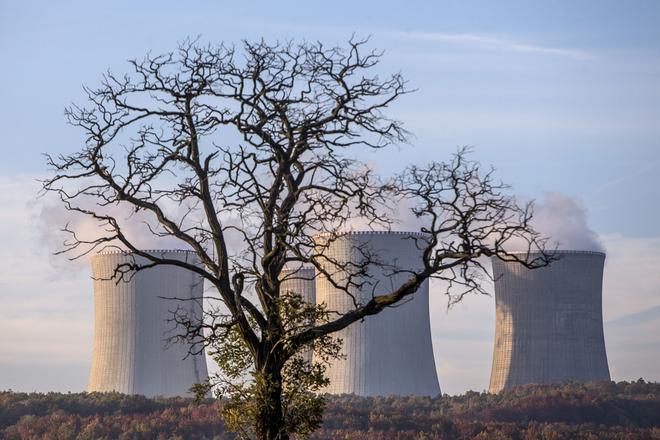Against the previous year, consumption decreased by 326 gigawatt/hours (-1.13 percent).
The production of power, compared to the previous year, however, declined even more markedly. The year-on-year decline was 1,336 GWh (-4.67 percent) to 27,254 GWh. The deficit in covering consumption was secured by increased import of electric power, mostly from the Czech Republic and Poland, according to the Economy Ministry as quoted by the TASR newswire. This is based on results of a report monitoring the security of electric power supplies in Slovakia for 2014.
Nuclear power plants had the biggest share in covering electricity consumption in 2014.
“Unlike the absolute figure, which declined from 15,720 GWh in 2013 to 15,499 GWh in 2014, the percentage share [of nuclear]increased from 55 percent to 56.9 percent,” the ministry noted.
The decline of power produced in 2014, compared to 2013 in absolute figures, was recorded also in thermal power plants: from 4,496 GWh to 3,479 GWh as well as in hydropower plants – from 5,062 GWh to 4,572 GWh.
It was an interesting situation for company-owned power plants and renewable power sources: photovoltaic plants marked a decline from 588 GWh to 476 GWh, while the share of power produced from biomass and biogas increased.
In 2014, the declining trend in power consumption y-o-y continued, by 1.13 percent (from 28,681 GWh to 28,355 GWh). However, in the first four months of 2015, power consumption increased by 3.6 percent and total consumption for the whole year is expected to reach 28,900 GWh, i.e. an increase of about 2 percent against 2014.
Slovakia has still not achieved self-sufficiency in power production: last year, the deficit was covered by increasing the import of energy, mostly from the Czech Republic and Poland, rising by 4 percent of the total annual power consumption compared to the previous three years.
Slovakia is still expected to rely on foreign imports but the situation should improve after the launch of two new nuclear blocks at the Mochovce power plant; in 2020, Slovakia is expected to produce almost 37 terawatt/hours while consuming only 31 TWh. The surplus of power production will be limited only by the transmission capacity of transmission wires and the Slovakia-Hungary arrangements will be crucial, the report states. If no new 400-kiloVolt transmission lines are constructed between these countries and when cross-border transmission across Slovakia grows, a situation could arise when Slovakia’s export of power could be limited by network capacity.



 Jaslovské Bohunice nuclear power plant. (source: Sme)
Jaslovské Bohunice nuclear power plant. (source: Sme)